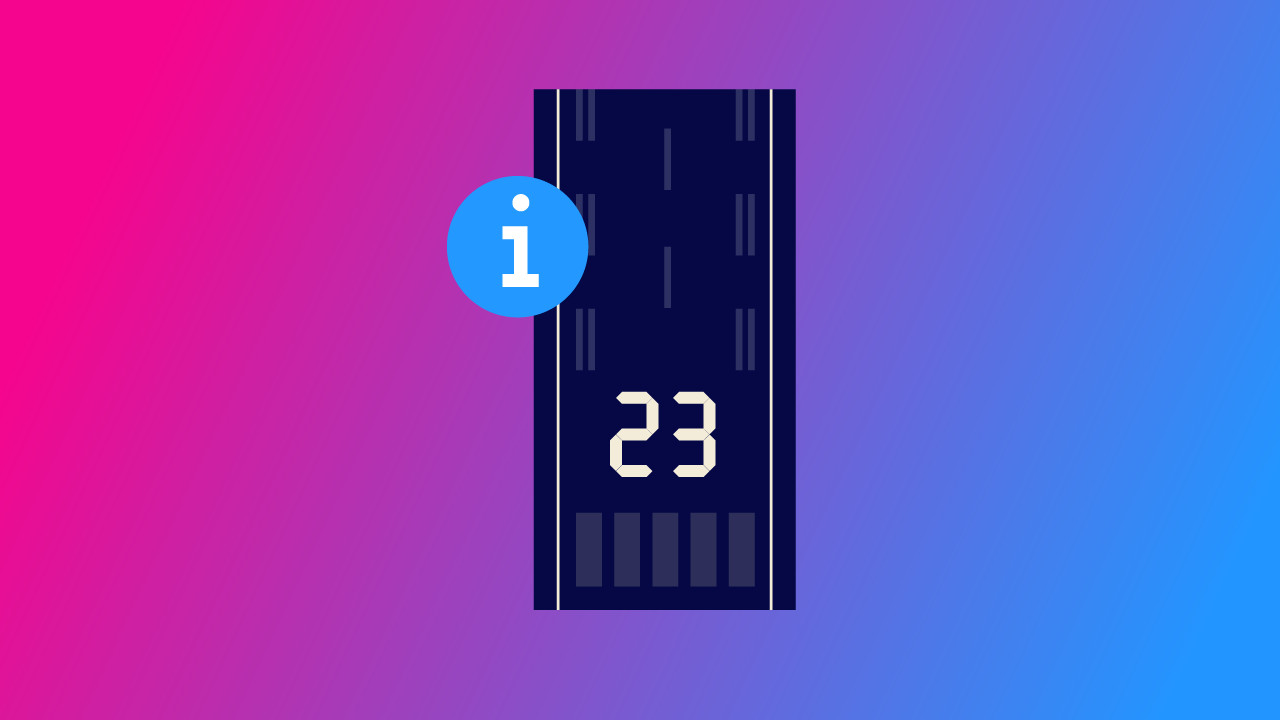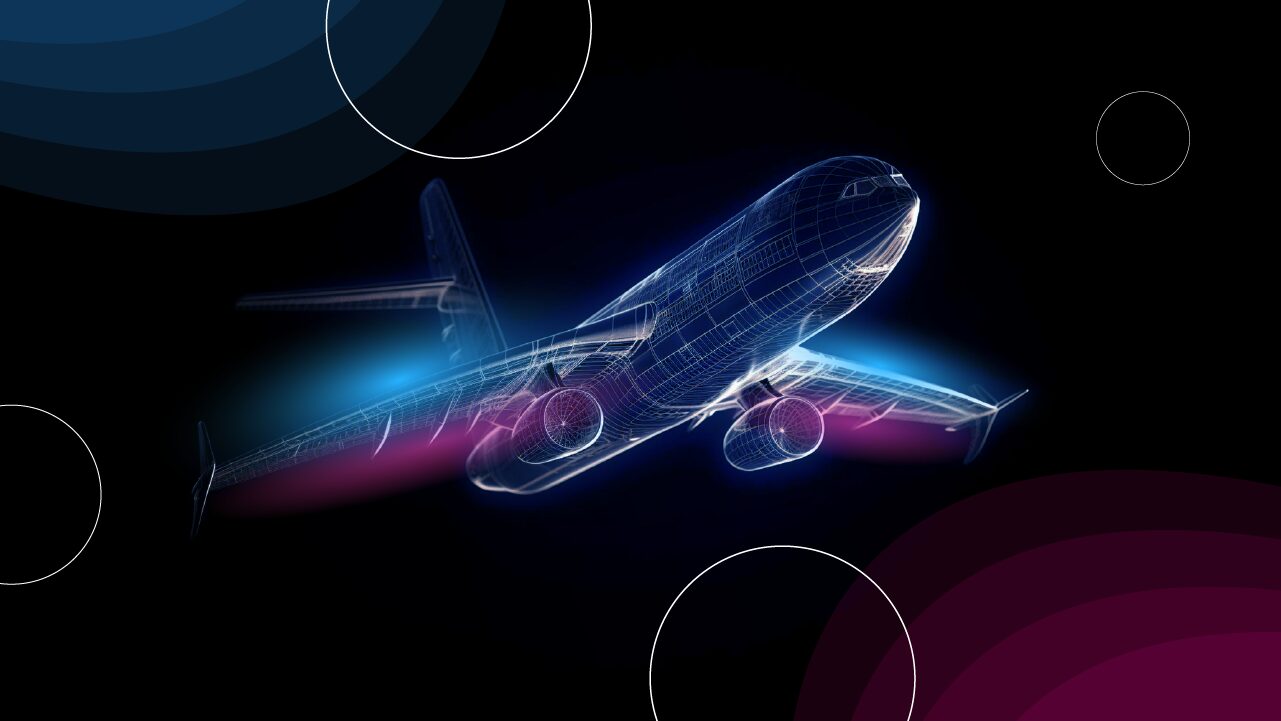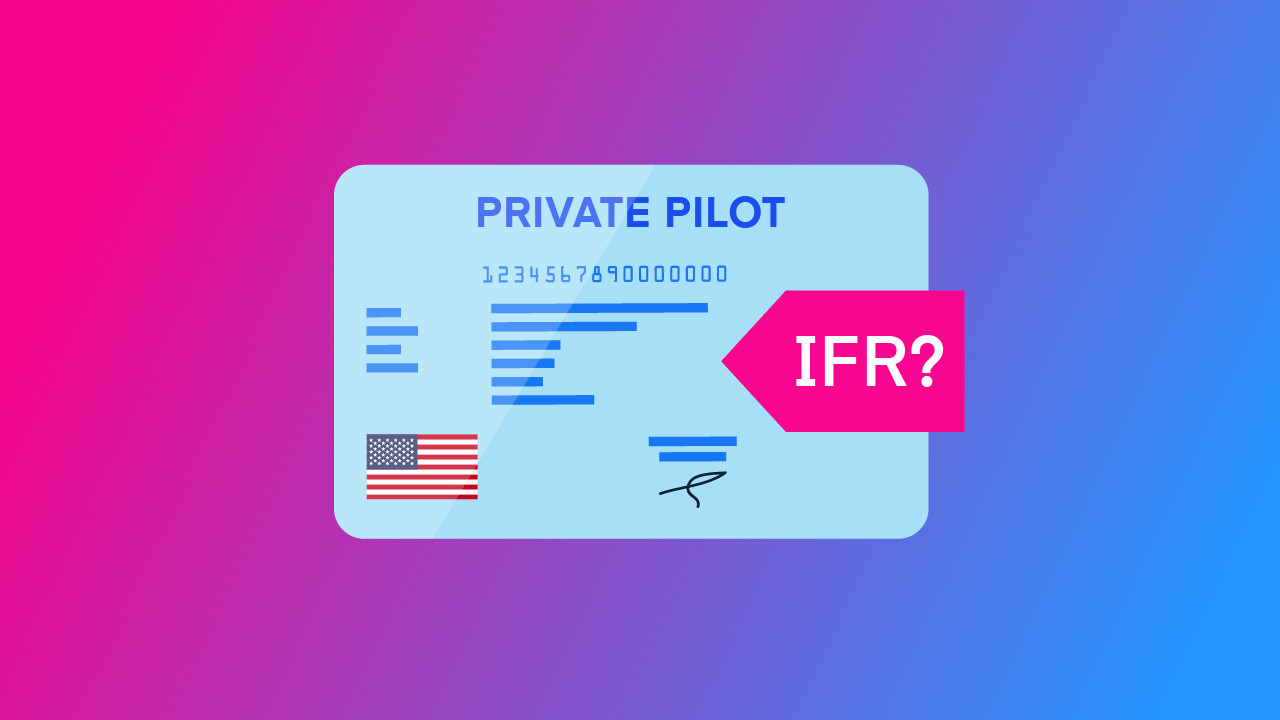-
Key Takeaways
-
Runway Numbers Explained for Beginners
-
Factors Influencing Runway Orientation
-
How to Figure Out Runway Numbers
- Why Is There No Runway “00”?
- Why Do Runways Sometimes Change Numbers?
- Reciprocal Runways – Parallel Runways
- Reciprocal Runway Numbers – Easy Calculations
-
What About Letters on Runways?
-
Why Magnetic Numbers Matter
- Are Runway Numbers in Degrees True or Magnetic?
- Exceptions to Magnetic North for Runway Numbers
-
How Do I Say Runway Numbers?
-
Runway Numbers – Things to Be Aware of When Flying
- Changes in Runway Numbers and Chart Updates
- Crosswind Calculations in Areas with High Variation
-
Conclusion
Did you know that those huge white numbers at the start of the runway aren’t just assigned at random? They actually have meaning.
There is a logical and easy system for assigning runway numbers. Today, we will tell you all you need to know to work out which direction you are taking off and landing.
Key Takeaways
- Runway numbers reference the nearest 10-degree magnetic heading, with the last zero removed.
- Parallel runways use “L,” “C,” and “R” to differentiate between them.
- Some airports may use true north for runway numbers due to high magnetic variation.
- Magnetic north moves over time, causing occasional changes to runway numbers.
Runway Numbers Explained for Beginners
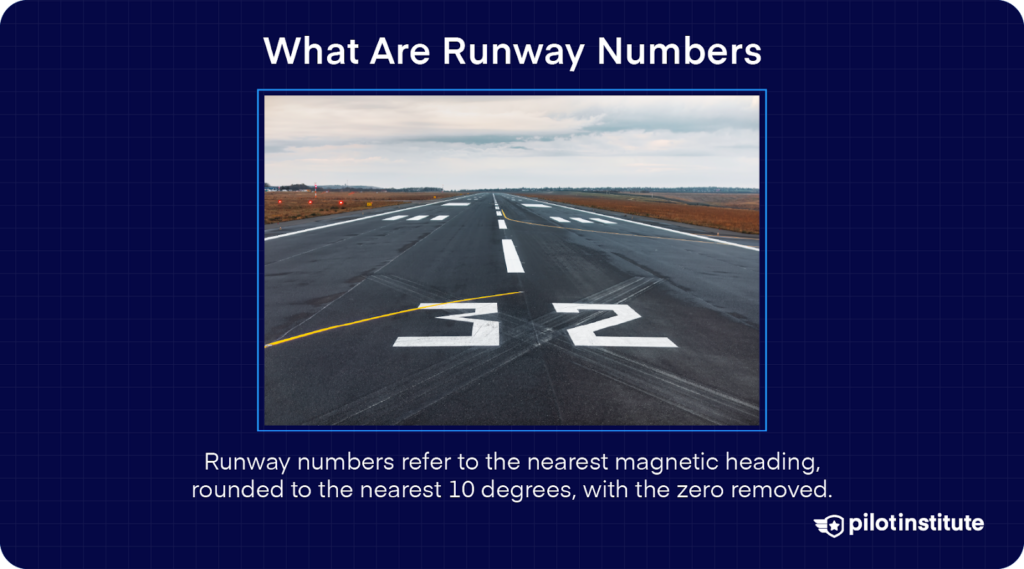
Runway numbers are actually a reference to the closest magnetic heading of the runway. The runway heading is rounded to the nearest 10 degrees, and the zero is removed.
This number is then assigned to the runway. Further differentiation can be achieved with letters on parallel runways.
While it is relatively simple, there are a few things to be aware of when discussing runway numbers.
Airfields are actually pretty heavily regulated by how they are named.
Here’s what you need to know: those numbers at the end of the runway are not for decoration. They are also not arbitrarily named. In fact, there is a lot of information held within those huge white digits.
The runway markings tell you where the runway is pointing, referencing magnetic north.
Let’s imagine facing down a runway with a compass in our hand. Our compass reads 092°.
What is the runway number?
Well, here’s a step-by-step guide to how it is calculated:
- The runway heading is rounded to the closest 10° (in this case, 092° becomes 090°)
- The final ‘zero’ is removed to give a two-digit identifier (so in this case 090° becomes “09”)
- The resulting number is the runway number.
See? We told you it was simple!
Now that you know how runway numbers are assigned, try to work out which direction you would be pointing in the following examples.
- Runway 22
- Runway 34
- Runway 01
You need to add a zero to the ends of these numbers! The result is the direction you are pointing in degrees magnetic.
Factors Influencing Runway Orientation
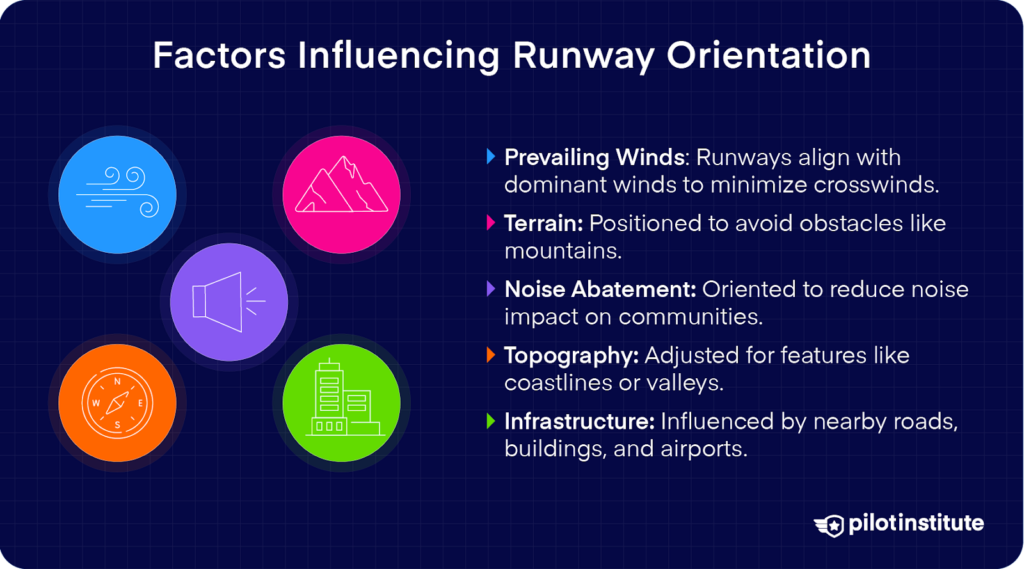
Most major airports have more than one runway. The direction the runway faces will be optimal based on several factors. Factors used to decide on runway direction include:
- The predominant prevailing wind trend
- Terrain
- Noise abatement and nearby residential areas
- Local Topography
- Existing infrastructure
- And much more…
How to Figure Out Runway Numbers
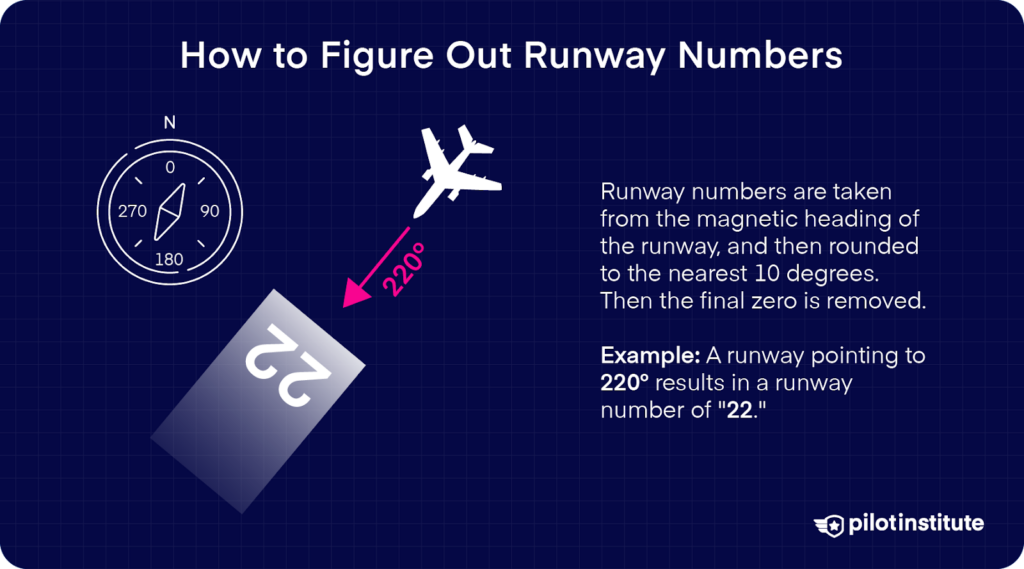
Runway numbers are taken from the magnetic heading of the runway, and then rounded to the nearest 10 degrees. Then the final zero is removed.
So, to reiterate the calculation made earlier in the article, a runway pointing to 092° is rounded to 090°, resulting in a runway number of “09.”
Why Is There No Runway “00”?
You shouldn’t find any runway numbered either “0” or “00”. Any runway which points to magnetic north will normally be given the designator “36” (as in 360 degrees). This will also correspond with the headings read out by both ATC and the pilot.
When an airplane is flying north, it is always said to be flying a heading of “three-six-zero”, and never “zero zero zero” degrees. This naming convention of the runway numbers reflects this.
Why Do Runways Sometimes Change Numbers?
If you are familiar with a given airport, you may notice that occasionally (and by “occasionally” we mean normally in terms of several years), the runway numbers change.
What is the reason for this?
You might be surprised to learn that the magnetic north doesn’t stay constant. That’s right! It moves!
Over many years the huge lump of geomagnetic iron drifts, causing the magnetic north to move ever so slightly.
Remember how we said that runways are rounded up to the nearest 10°? Well, if magnetic north moves significantly enough to mean that the runway heading doesn’t correspond to the nearest 10°, well, it’s time to change the numbers so that it does!
Thankfully, this is a relatively rare occurrence, meaning some poor, unfortunate person only has to paint over 63-foot-tall numbers and letters every decade or so.
Reciprocal Runways – Parallel Runways
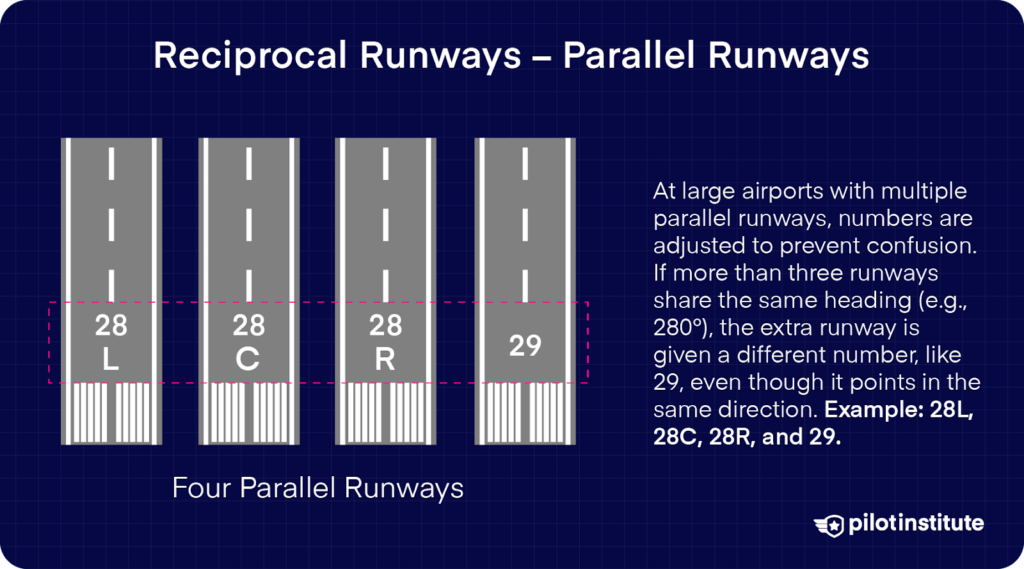
Here’s where it gets interesting. In very big airports, there may be two parallel runways or even more than three runways pointing in the same direction (in some rare cases, even five parallel runways).
Well, there is a naming convention for that, too!
A simple rule is followed if there are more than 3 parallel runways. The next series of runways will have their final digit changed by 1 to avoid any confusion.
This is the case even though the ‘extra’ runway may point in exactly the same direction. So let’s say there were 4 runways, all pointing to 280°. The runway numbers might be designated something like this:
- 28L
- 28C
- 28R
- 29
It is important to note that runway 29 still points to 280°. The number has been amended to prevent confusion with the other runways.
Reciprocal Runway Numbers – Easy Calculations
Quite simply put, the reciprocal of any runway number varies by 180° as it is the opposite facing runway. But you’ll remember that we always remove the third and final digit when discussing runway numbers, so 180° becomes 18.
So, we can say that a reciprocal runway number is always 18 different from its opposing number.
Using a little clever math, we can come up with a ‘hack’ to easily work out runway numbers and their reciprocals.
Here’s a step-by-step guide and a working example.
If you can add and subtract 2 from any number, you are covered: –
- Take any runway number as an example.
- If it begins with a “0” or “1,” add 2 to the first number. If the runway number begins with a “2” or “3,” subtract 2 from the first number.
- Do the opposite to step two to work out the second number. If you added 2 to the first runway number, subtract 2 from the second, or vice versa.
Want to see it in action? Let’s work out the reciprocal runway number for runway “04.”
Runway “04” starts with a zero, so, according to the above steps, we will add two to the first number.
0 + 2 = 2
Because we added 2 to the first number, we are going to subtract 2 from the second runway number
4 – 2 = 2
The first number of the reciprocal to runway 04 is 2. The second number is 2. Together, that makes “22”, and as you’ll see from our table above, the reciprocal of runway number 04 is runway 22!
Here’s another method to help you figure out what the number would be on the paved runway in the opposite direction.
To find the opposite runway, you can also add or subtract 180° from the magnetic direction.
Let’s work through one:
- Runway 22
- Add a zero to get 220° magnetic.
- Add 180°: 220° + 180° = 400° (subtract 360° to stay within compass limits), resulting in 040°.
- The opposite runway is Runway 04.
Here’s a tip, if you have a compass rose on your E6B calculator you can see what the opposite runway would be as well.
What About Letters on Runways?
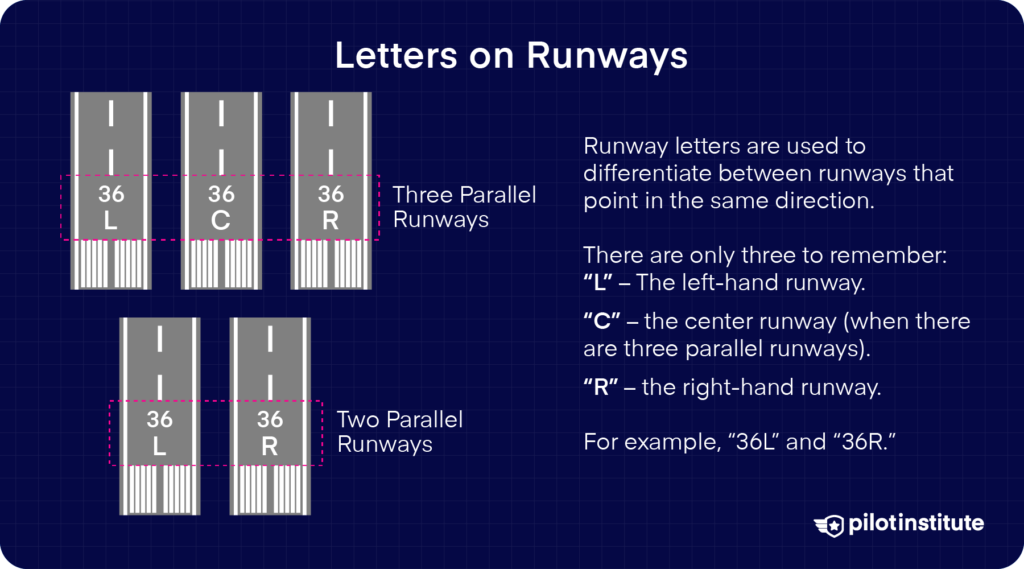
And here is where the letters come in.
Runway letters are used to differentiate between runways that point in the same direction. There are only three to remember:
- “L” – The left-hand runway
- “C” – the center runway (when there are three parallel runways)
- “R” – the right-hand runway
So, for example, “36L” and “36R.”
Why Magnetic Numbers Matter
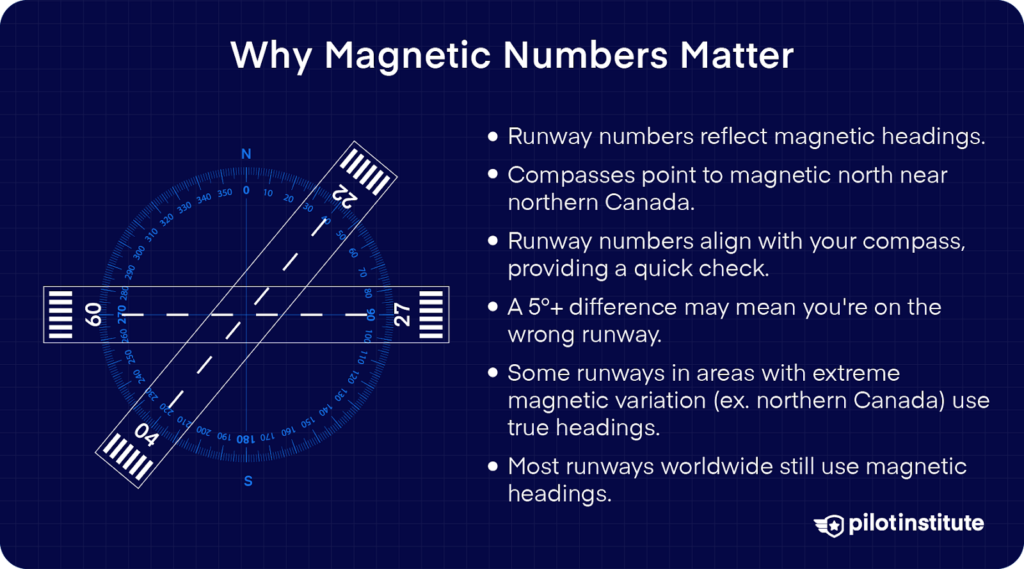
Simply put, runway numbers reflect the magnetic heading of the runway. Pilots align their compass or heading indicator with the runway direction during takeoff and landing.
Without magnetic numbers, navigating runways would be much more difficult, especially at complex or busy airports.
Are Runway Numbers in Degrees True or Magnetic?
Some say that airport numbers always reference the nearest heading in degrees magnetic, but that is not true.
The difference between a true heading and a magnetic heading is caused by local variation, as compasses don’t point to the geographic north pole but instead to a point in northern Canada.
Pilots always reference magnetic heading, and their instruments, such as a heading indicator, will always point in this direction.
Many airport runway numbers the world over are given in terms of degrees magnetic. And this is actually pretty useful, especially when flying at fields with multiple runways.
Why?
Your compass or heading indicator should closely match the runway numbers when you are lined up on the runway.
It’s a great gross-error check. If the numbers aren’t within, say, 5 degrees, there’s a good chance that you are lined up on an incorrect runway.
Exceptions to Magnetic North for Runway Numbers
Now, there are exceptions where runway designations are based on degrees true instead of magnetic. But this usually happens in places where magnetic variation is extreme or unstable.
Here’s an example: in parts of northern Canada and Greenland, magnetic variation can change rapidly because of the proximity of the magnetic north pole.
For this reason, runways are sometimes referenced to true north headings to avoid constantly renumbering them.
You might also encounter this at certain military or research airfields because certain types of operations might need to use true headings for specific procedures.
But don’t worry, these cases are rare.
A majority of airport runways worldwide still use magnetic headings, so it’s easy for your compass or heading indicator to align with the numbers you see as you line up for takeoff or landing.
How Do I Say Runway Numbers?
Runway numbers are always given as individual numbers combined together. Each number is read separately to ensure that there is no confusion. There are no whole 10’s or 100’s used when ATC or pilots mention runways.
Also, the first zero is commonly truncated in the USA (but in Europe, it is pronounced)
So, runway “22” is pronounced runway “two-two” (not “twenty-two”)
And then runway “9L” is simply pronounced as “Nine-left”.
You can read more about the correct phraseology according to the FAA here…
Runway Numbers – Things to Be Aware of When Flying
Runway numbers are actually pretty straightforward most of the time. Once you know how they are named, it is fairly easy to determine where they are pointing.
However, as with all things flying-related, it pays to have a little extra information and give special consideration to one or two points.
Here are some things to consider when thinking about runway numbers:
Changes in Runway Numbers and Chart Updates
Being a good pilot is all about staying up to date. This also includes ensuring that the charts you fly with are recent.
Why is this so important?
Remember how we discussed that runway numbers change from time to time?
If you are flying with out-of-date charts, then you may find that the numbers on the chart don’t actually correspond to the runway numbers in the real world. At airports with many runways, this could lead to a great deal of confusion!
Crosswind Calculations in Areas with High Variation
Variation, the difference between the magnetic and true heading, is not a constant the world over. In some areas, it is practically zero. In other areas, it can be significant.
Here’s why this is important.
The runway numbers (and therefore its heading) are given in degrees magnetic. However, meteorological information (particularly TAFS and METARS) is given in degrees true!
The end result? You might think that you are landing into a headwind (preferable) when you might be facing a significant crosswind!
Want to know about crosswinds? Here’s an easy way to make a quick crosswind calculation.
Conclusion
Runway numbers actually relate to the direction, in degrees magnetic, that the runway is pointing. They are further deconflicted with letters if there are parallel runways. To work out where they point, just add a zero to the end of the numbers.
Here at Pilot Institute, we love to remove the mystery from flying with clear and simple instructions to help you succeed in your flight training. Want more examples? You might want to check out this free Private Pilot Ground School course.
